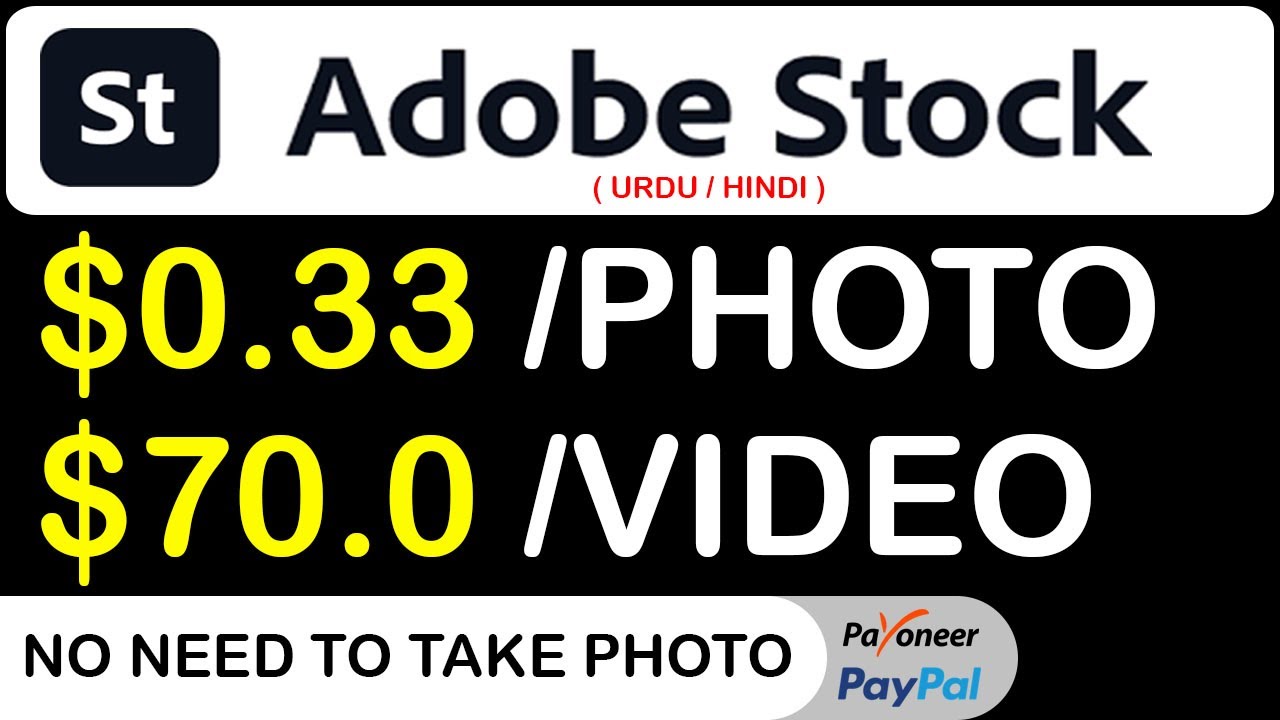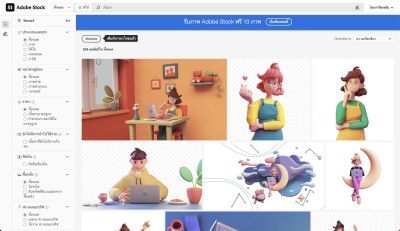Contributing to Adobe Stock can be a lucrative opportunity for photographers and artists. To succeed, it’s essential to understand the platform, its requirements, and best practices. This guide provides valuable insights to help you navigate the world of stock photography and maximize your earning potential.
Getting Started with Adobe Stock

To become a contributor on Adobe Stock, you must first create an Adobe ID if you don’t already have one. Once you have an account, you can start uploading your images and assets. Here are essential steps for getting started:
- Create Your Portfolio: Start by compiling your best work that aligns with current trends and popular categories.
- Understand Licensing: Familiarize yourself with the types of licenses Adobe Stock offers, especially the standard and extended licenses.
- Upload Quality Content: Ensure your images meet Adobe’s quality standards, including resolution and technical requirements.
- Optimize Your Keywords: Use relevant keywords to improve the searchability of your content and reach potential buyers.
Understanding Adobe Stock Requirements

Adobe Stock has specific requirements that contributions must meet to be accepted. Adhering to these guidelines is crucial for your success as a contributor:
- Technical Specifications: Ensure your files are in high resolution, typically at least 4MP for photos, and in the appropriate file formats (JPEG, AI, or EPS).
- Model and Property Releases: If your images feature recognizable people or property, obtain releases to avoid legal issues.
- Steer Clear of Copyrighted Material: Do not include logos, trademarks, or any copyrighted elements without permission.
- Focus on Trends: Stay updated with market trends and demand to tailor your submissions accordingly.
Choosing the Right Content to Upload

When it comes to being a successful contributor on Adobe Stock, choosing the right content to upload can make all the difference. After all, your work needs to resonate with potential buyers while also meeting market demand. Here are some useful tips to help you curate your portfolio effectively:
- Research Market Trends: Keep an eye on current design trends and topics that are in high demand. Seasonal content, such as holiday imagery or summer activities, often sells well, so consider uploading content that aligns with these themes.
- Focus on Quality: High-quality images are crucial. Ensure that your photos are well-composed, properly lit, and free of any distractions. Pick your best work to showcase, as quality often outweighs quantity.
- Diversify Your Offerings: While you may have a niche area that you excel in, don’t hesitate to branch out. Offering a variety of styles, subjects, and formats (such as vectors or video) can attract a wider audience.
- Understand Your Audience: Think about who might be looking for the images you’re creating. Tailor your content to meet their needs—consider businesses, marketers, bloggers, and more.
In summary, invest time in planning your uploads. Evaluate what works well, analyze your competition, and listen to feedback. This proactive approach will not only enhance your portfolio but also increase the chances of your submissions being picked up by buyers.
Best Practices for Metadata and Keywords

Once you’ve selected the right content to upload, the next step is to optimize your metadata and keywords. These elements play a crucial role in how easily your images can be discovered by potential buyers. Here’s how to make your uploads stand out:
- Use Descriptive Keywords: Think like a buyer. What terms would someone use to search for your image? Include a mix of broad and specific keywords to capture a range of potential searches.
- Include Relevant Metadata: Fill out all relevant fields, including titles, descriptions, and categories. A well-written description does wonders for visibility—aim for 15-25 words that accurately describe your image.
- Leverage Synonyms and Related Terms: Expand your keyword strategy by incorporating synonyms and related terms. This helps your content appear in different search contexts, increasing visibility.
- Stay Within Limits: Adobe Stock has specific guidelines regarding keyword limits—generally, you should include around 25 keywords for best results. Avoid over-tagging; unrelated tags can negatively impact discoverability.
By following these best practices for metadata and keywords, you’ll significantly enhance your images’ chances of being discovered and downloaded. Remember, effective tagging is an art, and honing it will pay off in the long run!
How to Optimize Your Submissions for Visibility
Getting your work seen on Adobe Stock is crucial for success, and optimizing your submissions can make all the difference. Here are some strategies to enhance the visibility of your content:
- Use Relevant Keywords: Think of what potential buyers might search for when looking for images. Be specific yet concise. Include both broad and niche keywords to cover a wider audience.
- Create Descriptive Titles: Your title should provide a clear understanding of the image. Instead of a generic title like “Nature,” try something like “Sunset over Rocky Mountains with Pine Trees.”
- Write Detailed Descriptions: This is your chance to explain the context, mood, and potential uses for your images. The more informative your description, the better your chances of making a sale.
- Add Categories: Don’t forget to categorize your work appropriately. This helps Adobe Stock sort your content effectively, making it easier for customers to find.
- Utilize High-Quality Thumbnails: Thumbnails are often the first impression your work makes. Ensure they are clear, sharp, and represent your content well.
Remember, optimizing your submissions is about making them discoverable and ensuring they meet the needs of potential buyers. Regularly review how your submissions are performing, and tweak your keywords and descriptions as needed!
Marketing Your Adobe Stock Portfolio
Once your portfolio is up and running, it’s time to attract attention! Here are several effective marketing strategies to help you promote your Adobe Stock contributions:
- Leverage Social Media: Share your work on platforms like Instagram, Pinterest, and Facebook. Use relevant hashtags to help users discover your content. Engage with followers and other creatives to build a supportive network.
- Start a Blog or Website: Create a personal site to showcase your portfolio and share your creative process. This not only builds your brand but also improves SEO, making it easier for potential buyers to find you.
- Join Online Communities: Participate in forums and groups related to your niche. Platforms like Reddit, Facebook Groups, or photography forums can be great places to share your work and connect with potential buyers.
- Email Marketing: Build an email list and share regular updates about your latest submissions, blog posts, and tips. This keeps your audience engaged and encourages them to check out your Adobe Stock portfolio.
- Collaborate with Influencers: Partnering with influencers can help you reach a larger audience. Look for influencers in your niche who may want to use your stock images in their content.
Remember, effective marketing isn’t just about promotion; it’s about building relationships and showcasing your unique style. Stay consistent and patient, and watch your portfolio grow!
Tracking Your Sales and Metrics
Understanding your performance as an Adobe Stock contributor is crucial for success. By effectively tracking your sales and metrics, you can identify what’s working, what isn’t, and how to optimize your portfolio for greater visibility and sales.
Here’s how you can approach tracking:
- Sales Dashboard: Adobe Stock provides a sales dashboard where you can view your earnings, downloads, and overall sales trends. Make it a habit to check this regularly to see how your work performs over time.
- Meters and Metrics: Pay attention to key metrics such as:
- Number of downloads
- Revenue per download
- Your best-performing images or videos
- Sales Trends: Identify patterns in your sales. Are there certain months when sales spike? Do specific types of images sell better? Recognizing these trends can help you focus your efforts where they matter most.
Additionally, consider keeping a personal tracking spreadsheet. This can include:
| Date | Item Sold | Revenue | Notes |
|---|---|---|---|
| 2023-01-15 | Image Title 1 | $5.00 | Best seller |
| 2023-01-20 | Image Title 2 | $3.00 | Needs more promotion |
This not only tracks your financials but also acts as a great feedback loop, helping you refine your strategy and enhance your contribution to Adobe Stock.
Staying Updated with Adobe Stock Trends
The stock photography landscape is constantly evolving, which is why staying updated with Adobe Stock trends is essential for maintaining a competitive edge. Knowing what’s popular can guide your creative process and help align your work with market demands.
Here are some strategies to keep your finger on the pulse:
- Follow Adobe’s Blogs and Newsletters: Adobe regularly publishes updates about trends and changes in the stock market. Signing up for their newsletters or following their blogs can provide valuable insights.
- Social Media and Forums: Engage with communities on social media platforms like Instagram, LinkedIn, or specialized photography forums. Seeing what’s trending via hashtags or discussions can spark innovative ideas for your content.
- Keyword Trends: Use tools like Google Trends or Adobe Stock’s own search functionality to explore what keywords are gaining popularity. This can guide you in creating content that modern buyers are searching for.
Moreover, make use of Adobe Stock’s curated collections. These often highlight current design trends and popular themes. Try to contribute to these collections as your work might have a higher chance of being featured, thus driving more visibility and sales.
In essence, by keeping a keen eye on trends, you can ensure that your contributions not only resonate with current buyer preferences but also stand out in a saturated market.
Common Mistakes to Avoid as a Contributor
Becoming a successful contributor on Adobe Stock is an exciting journey, but it’s not without its pitfalls. Here are some common mistakes to steer clear of:
- Ignoring Guidelines: Each platform has its own submission guidelines. Make sure to thoroughly understand and follow Adobe’s guidelines regarding image quality, metadata, and model releases. Ignoring these can lead to rejected submissions.
- Poor Quality Images: Always prioritize quality over quantity. Submitting a large number of mediocre images won’t boost your sales. Invest in good equipment, pay attention to lighting, and ensure your editing is spot on.
- Overlooking Keywords: Think of keywords as the bridge between your work and potential buyers. Neglecting to add relevant, specific keywords will limit your images’ visibility. Use popular keywords while remaining true to your content.
- Not Staying Current: Trends in stock photography change frequently. Regularly monitor what’s popular and tailor your submissions accordingly. Failing to stay updated can render your work outdated.
- Neglecting Marketing: Don’t rely solely on Adobe Stock to promote your work. Utilize social media, create a portfolio website, and engage with the community. Promote your images to broaden your reach.
Avoiding these common mistakes can significantly enhance your chances of success as an Adobe Stock contributor. Always seek to improve, learn from feedback, and keep refining your craft!
Success Stories from Top Contributors
Wondering what it takes to make it big on Adobe Stock? Let’s take a look at some inspiring success stories from top contributors:
- Emily Winters: Starting from a small photography studio, Emily utilized social media to showcase her work. By focusing on niche markets, like pet photography, she amassed a large collection that resonated with buyers. Her sales skyrocketed, leading to a six-figure income.
- Mark Henson: Mark created high-quality vector illustrations, paying close attention to current design trends. By always updating his portfolio and utilizing seasonal themes, he found himself often among Adobe’s top-selling contributors.
- Aisha Chen: Aisha combined her love for travel and photography. By capturing diverse cultures and landscapes, she attracted a global audience. Frequent updates and engaging storytelling drew buyers to her images, significantly boosting her sales.
These stories exemplify how dedication, creativity, and a keen understanding of market demands can lead to substantial success as an Adobe Stock contributor. With hard work and the right approach, you too can achieve your goals!


